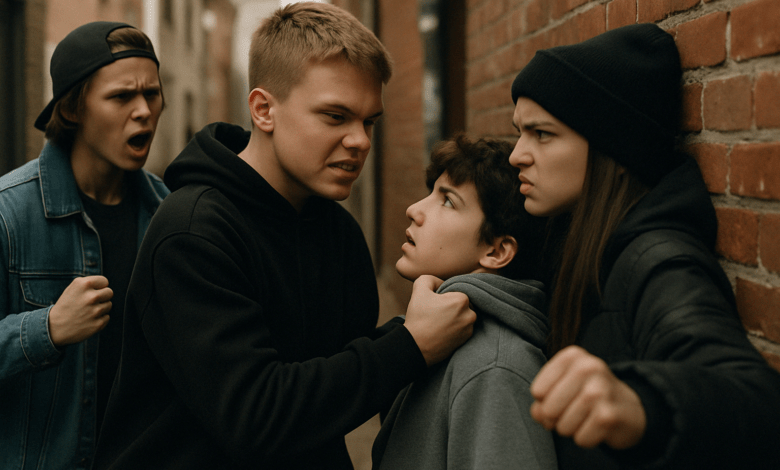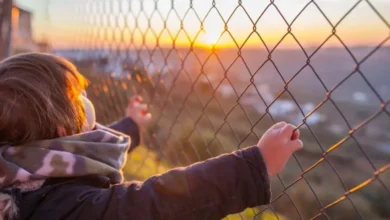The murder of a 19-year-old boy: the cruelty of teenagers during the war has become a systemic phenomenon

A generation that grew up under air-raid alarms, in bomb shelters and behind the screens of online lessons should have become more sensitive to suffering. In theory, yes, because war is a constant reminder of vulnerability, losses, and the cost of human life. However, in everyday reality, in particular in the criminal chronicle of recent years, we increasingly observe a completely different trend: teenagers do not just lose the ability to empathize, but increasingly resort to aggression, demonstrative violence, cruelty. And in many cases — at the limit or even beyond the limit of human imagination. Society often does not have time to react. We learn about another story already from the news: detention, criminal proceedings, autopsy, photos from the crime scene. And only then – indignation. However, outrage does not restore life to the murdered. And does not return responsibility to those who did not have time to form it.
On April 16, the police reported about the fact that there was a murder in Ivano-Frankivsk, which raises an acute internal question: what is happening to teenagers? The body of a 19-year-old boy with stab wounds was found on the outskirts of the city, near the Vovchynetsky hills. According to the regional police, three minors are involved in the crime. Two of them were detained, and investigators are working with them. Information about the event was entered into the Unified Register of Pretrial Investigations under Part 2 of Article 115 of the Criminal Code of Ukraine — intentional murder committed with particular cruelty by a group of persons.
Currently, almost nothing is known about the motive for this brutal murder. Neither the chronology of events nor the previous history of the relationship between the victims and the attackers has been released. But even under these limited circumstances, it is quite clear: the fact of participation in the murder of three teenagers is not an exception. This is another episode in a series of violent crimes involving minors, which have recently become more and more frequent, and society’s response to them is increasingly formal.
In the shadow of this crime is the theme of modern child cruelty. Why exactly now, in the fourth year of the war, are children capable of such actions? Why do teenagers not just conflict, but show aggression, moreover – take a knife and cause fatal injuries? Why exactly at the moment when the whole society seems to be rallying around survival, violence erupts among children?
The ongoing war in Ukraine undoubtedly leaves a mark on everyone, both adults and children. However, “children of war” does not necessarily mean orphans, evacuees, displaced persons or those who saw occupation. Today, a child of war is any teenager who lives in a reality where anxiety, news about losses, deaths, destruction of infrastructure, injuries, and destruction have become the norm. These are young people who form their perception of the world in conditions where any sensitivity seems superfluous. When the outside world imposes the logic of “survival” as a universal principle.
It is in this logic that teenagers born in 2007-2010 grow up. Their adolescence takes place in 2020-2025. Pandemic, distance learning, war, isolation, mass experience of fear, loss of usual socialization, tiredness of parents, inflation, departure of family members abroad, adults who cannot stand the tension themselves. These children grow up in an environment where sensitivity is frowned upon and emotion is a weakness. And at the same time, since childhood they are surrounded by gadgets, news, TikTok content, videos and films with bullying, showdowns, footage of war interspersed with comedy clips. That is why the acceptance of reality is fragmented, and death and violence cease to be perceived as something exceptional.
This case in the Frankiv region is just one of many that have appeared in the news recently. We read about beatings in schools, cases of bullying by a group of teenagers against the weaker ones, torture of stray animals, “court game” where teenagers bully their chosen victim. And every time questions arise: where were the adults? Why don’t they raise their children?
On the one hand, the answer is obvious: educational institutions have long been weakened. School is often reduced to the delivery of formal learning material, parents work overtime or abroad, and social services are overburdened. At the same time, psychological help is either unavailable or devalued. As a result, the child remains in an environment where he is primarily influenced by peers, social networks and violent action movies
But there is another question: why do some children develop an internal fuse even under these conditions, and some do not? Why does one child, faced with aggression, turn away, and the other joins it, even leads it? This cannot be explained solely by family or social networks. It is about a deeper gap in the formation of ethical ideas. These teenagers do not have a clear idea of the limit. For them, there is no stable concept: “that’s not possible.” Not because they are bad, but because they were not talked to, taught, explained.





